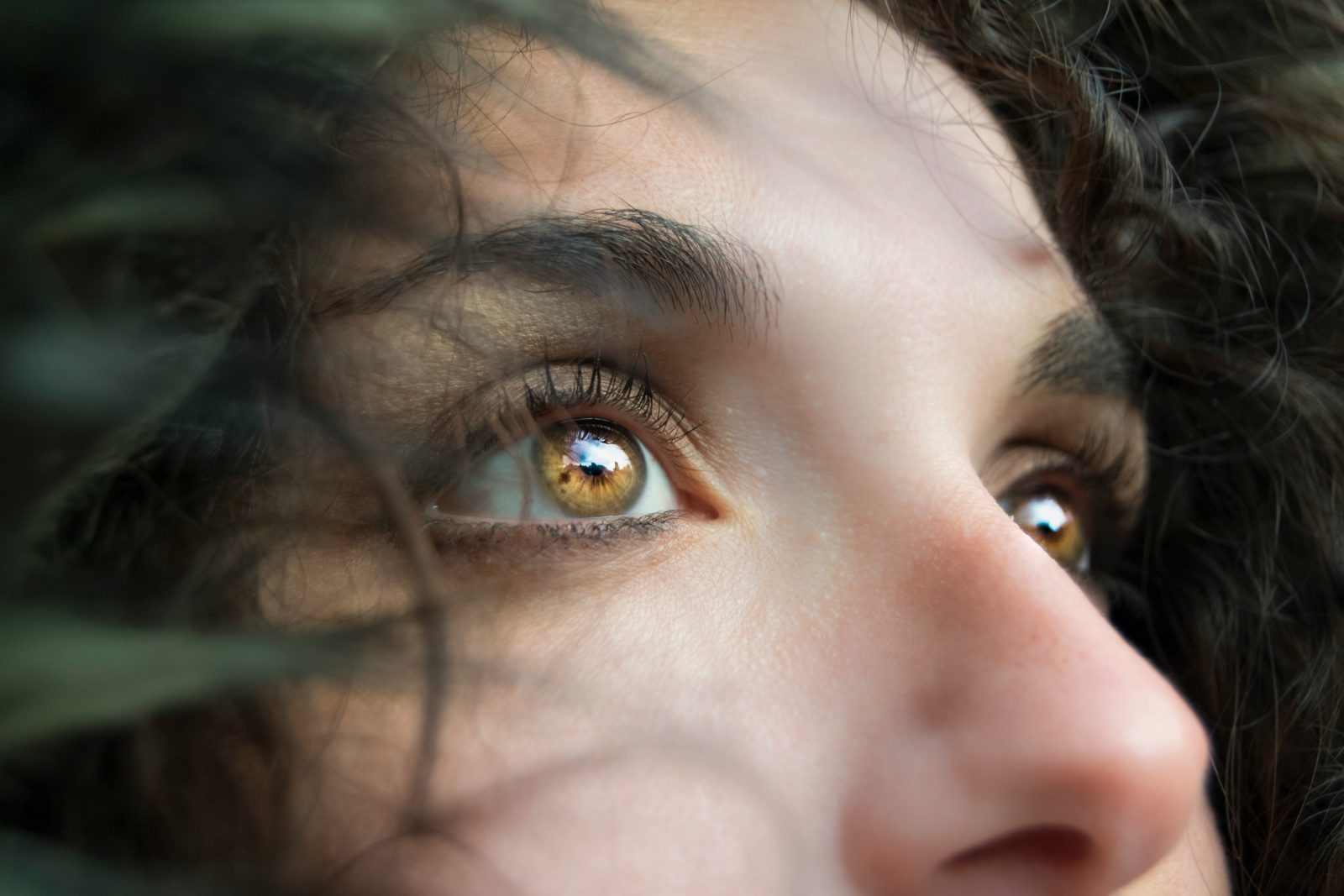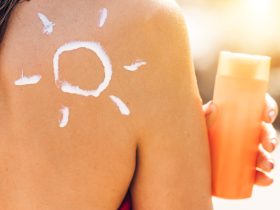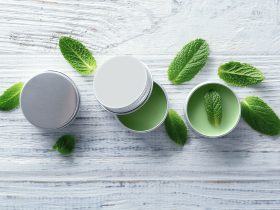Crow’s feet, those delicate lines that extend from the corners of your eyes, are a natural aspect of aging. While they cannot be completely eliminated, there are strategies to minimize their appearance and prevent them from becoming more pronounced.
These small wrinkles, often linked with laughter and expressions of happiness, are a common worry as individuals grow older. As time passes, they may become more noticeable, sparking concerns about aging and appearance.
However, there’s no need to worry. By understanding the factors that contribute to crow’s feet, learning how to address them, and implementing preventive measures, you can maintain a youthful and lively look for years to come.
What Are Crow’s Feet?
Crow’s feet are small wrinkles that develop around the eyes, often resembling the feet of a crow, hence the name. They are primarily caused by a decrease in skin elasticity and collagen as a person ages.
These fine lines tend to become more visible over time due to various factors, including repeated facial movements such as smiling, squinting, or frowning, as well as exposure to sunlight, smoking, and a decline in skin firmness.
Referred to scientifically as “periorbital wrinkles,” crow’s feet occur when the skin folds and creases around the delicate eye area over the course of time.
Common Causes of Crow’s Feet
Several factors contribute to the development of crow’s feet, those fine lines that form around the eyes:
- Aging: As we age, our skin naturally undergoes changes, including a reduction in collagen and elastin production. Collagen and elastin are proteins responsible for skin elasticity and firmness. As their levels decrease with age, the skin around the eyes becomes thinner and more prone to wrinkling, leading to the formation of crow’s feet.
- Sun exposure: Exposure to ultraviolet (UV) radiation from the sun is a significant factor in the development of crow’s feet. UV rays can penetrate the skin and damage collagen and elastin fibers, leading to premature aging and the formation of wrinkles.
Over time, unprotected sun exposure can accelerate the appearance of crow’s feet, making them more prominent and noticeable.
- Smoking: Smoking is detrimental to skin health and can exacerbate the development of crow’s feet. The chemicals in tobacco smoke restrict blood flow to the skin, depriving it of essential nutrients and oxygen.
This impairs the skin’s ability to repair and regenerate, leading to decreased elasticity and an increased risk of wrinkles. Additionally, smoking exposes the skin to harmful free radicals, further contributing to premature aging and the formation of crow’s feet.
- Repetitive facial expressions: Everyday facial movements such as squinting, frowning, laughing, blinking, and smiling can contribute to the formation of crow’s feet.
Over time, these repetitive motions cause the skin around the eyes to crease and fold, leading to the development of fine lines and wrinkles.
While these expressions are a natural part of communication and emotional expression, they can contribute to premature aging of the skin, particularly in areas where the skin is thinner and more delicate.
- Dryness: Skin dryness, especially around the eyes, can exacerbate the appearance of crow’s feet. The skin in this area is naturally thinner and more prone to dryness compared to other parts of the face.
Factors such as harsh weather conditions, low humidity levels, and inadequate hydration can contribute to dry skin, making crow’s feet more noticeable.
Dryness can also compromise the skin’s barrier function, leading to increased sensitivity and susceptibility to environmental damage.
By understanding these contributing factors, individuals can take steps to protect their skin and minimize the development of crow’s feet.
This may include adopting a comprehensive skincare routine, wearing sunscreen daily, avoiding smoking and excessive sun exposure, staying hydrated, and practicing good facial skincare habits.
Treatment for Crow’s Feet
Treatment options for crow’s feet are available and are commonly administered by dermatologists and medical professionals. These options include:
- Topical creams: Many topical creams for crow’s feet aim to hydrate the skin, temporarily reducing the appearance of wrinkles. Some creams contain ingredients like retinol, antioxidants, and peptides, which stimulate collagen production and improve skin texture. Retinol creams are particularly effective in reducing fine lines and wrinkles.
- Injectable fillers: Dermal fillers, such as hyaluronic acid, are used to plump up the skin and smooth out wrinkles. Hyaluronic acid has many benefits and is a common filler for crow’s feet, although other types like calcium hydroxylapatite and poly-L-lactic acid are also used.
Possible side effects of dermal fillers include bruising, swelling, redness, and tenderness at the injection site.
- Botox injections: Botox injections can temporarily relax the muscles around the eyes, diminishing the appearance of crow’s feet. Botox works by blocking nerve signals to the muscles, resulting in smoother skin.
This procedure is quick and usually takes about 10–15 minutes. Mild side effects such as bruising, swelling, and redness may occur, but serious side effects are rare.
- Laser therapy: Laser resurfacing treatments can stimulate collagen production and improve skin texture, thereby reducing crow’s feet.
Ablative laser resurfacing removes the entire top layer of skin, while fractional laser resurfacing delivers laser energy in a fractionated way. Both methods trigger the production of new collagen, resulting in smoother skin.
Side effects may include swelling, redness, crusting, scabbing, infection, and changes in skin pigmentation.
- Chemical peels: Chemical peels exfoliate the skin by applying a chemical solution, causing the outer layers to peel off. This stimulates the production of new collagen, leading to smoother and younger-looking skin.
Side effects may include temporary redness, swelling, stinging, and crusting.
Before undergoing any medical procedures for crow’s feet treatment, it is essential to consult a dermatologist. A dermatologist can assess your skin condition and recommend the most suitable treatment option based on your individual needs and concerns.
How to Conceal Crow’s Feet
To temporarily conceal crow’s feet, consider the following techniques:
- Eye cream: Hydrating eye creams can plump up the skin around the eyes, reducing the appearance of wrinkles. Opt for a moisturizing eye cream that contains ingredients like hyaluronic acid or peptides to help smooth out fine lines.
- Concealer: Choose a lightweight, creamy concealer that matches your skin tone. Gently pat the concealer onto the crow’s feet area using your ring finger or a makeup sponge to blend it seamlessly. Avoid using too much product to prevent creasing in fine lines.
- Makeup techniques: Apply concealer in a V-shape under the eyes and blend it upward to lift the appearance and minimize shadows that accentuate crow’s feet. Additionally, use contouring and highlighting techniques to distract from crow’s feet and create the illusion of smoother skin. Focus on highlighting the inner corners of the eyes and the cheekbones to draw attention away from fine lines.
- Avoid loose powder: Loose powder can settle into wrinkles, making them more pronounced. Instead of using loose powder to set your makeup, opt for a finely milled pressed powder or a setting spray to help your makeup last without emphasizing crow’s feet.
If you incorporate these techniques into your makeup routine, you can effectively conceal crow’s feet and achieve a smoother and more youthful appearance around the eyes.
Natural Remedies for Crow’s Feet and Prevention Measures
To prevent the development of crow’s feet and maintain youthful skin around the eyes, consider the following steps and natural remedies:
- Moisturize and Exfoliate: Use natural moisturizers like coconut oil, shea butter, or almond oil to keep the skin hydrated and supple. Exfoliate regularly to remove dead skin cells and improve the absorption of skincare products
- Exercise: Regular exercise improves circulation, which helps moisturize and strengthen the skin. Incorporate activities that promote blood flow to the face, such as facial yoga or massage.
- Hydration: Drink plenty of water to keep your skin hydrated and supple, reducing the appearance of fine lines and wrinkles.
- Sun Protection: Use sunscreen with SPF 30 or higher daily to protect your skin from harmful UV rays. Opt for mineral sunscreens and wear sunglasses to shield your eyes from sun damage and prevent squinting.
- Healthy Lifestyle: Maintain a balanced diet rich in anti-aging foods and supplements such as collagen, vitamin C, omega-3 fatty acids, and antioxidants. Get enough sleep, manage stress, and avoid smoking to promote overall skin health and slow down the aging process.
- Natural Skin Care Ingredients: Incorporate natural skin care ingredients like apple cider vinegar, sea salt, lemon essential oil, argan oil, or witch hazel into your skincare routine to promote skin health and reduce the appearance of crow’s feet.
- Microneedling: Consider microneedling to stimulate collagen and elastin production, which can help plump up the skin and reduce the appearance of wrinkles.
- DIY Moisturizers: Make DIY moisturizers using natural ingredients like lavender oil, tea tree oil, raw honey, avocado, or aloe vera to nourish and hydrate the skin.
Conclusions
In conclusion, while crow’s feet are a natural aspect of aging, there are effective strategies to address them and prevent their progression.
By understanding the underlying causes of crow’s feet, exploring various treatment options, mastering temporary concealment techniques, and adopting preventive measures, you can maintain youthful and vibrant skin for the long term.
While crow’s feet may symbolize a life filled with laughter and joy, there’s no harm in taking proactive steps to ensure your skin remains healthy and radiant.
Embrace these lines as a testament to your life experiences, but don’t hesitate to seek solutions that help you feel confident and comfortable in your skin. With proper care and attention, you can present your best self to the world, crow’s feet and all.
















Find Us on Socials